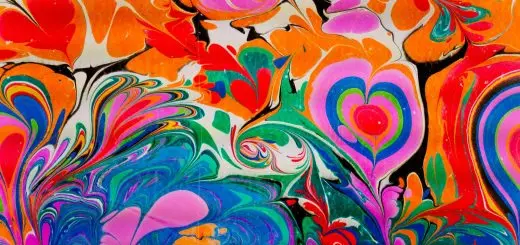Bhutanese Festivals: Colorful Celebrations and Buddhist Traditions

Looking for more amazing products? Check out our online store and explore our collection here! Happy shopping!
Before diving in, please note: This post is for informational purposes only. If you’d like to know more about how we approach topics, feel free to check out our friendly Disclaimer Page.
Hey there, amazing readers! 
We’re committed to delivering quality posts, and your support (even just sticking around despite the ads) means everything to us. So, bear with us, and thanks for helping us keep the good vibes rolling. Now, on to the fun stuff!
TRANSLATE BUTTON AT THE END OF THE ARTICLE
Introduction to Bhutanese Festivals
Bhutanese festivals, known as Tshechus, are vibrant celebrations deeply rooted in the country’s rich cultural and religious heritage.
These colorful events bring together communities from all over Bhutan to commemorate important dates in the Buddhist calendar with rituals, dance performances, and traditional music.
Festivals in Bhutan are not just mere events but are considered sacred occasions filled with spiritual significance and symbolism.
The entire nation comes alive during these festivals, with locals and tourists alike joining in the festivities.
Importance of Festivals in Bhutan
Festivals hold immense significance in Bhutanese culture as they play a vital role in preserving and promoting the country’s unique traditions.
These events are a way for Bhutanese people to come together, reaffirm their faith, and pass down age-old customs to the younger generations.
Festivals also serve as a time for reflection and spiritual renewal, with participants seeking blessings and merit by attending these sacred gatherings.
The communal nature of these celebrations fosters a sense of unity and belonging among the Bhutanese people, strengthening the social fabric of the country.
Unique Traditions of Bhutanese Festivals
Bhutanese festivals are known for their unique blend of religious rituals, colorful dances, and elaborate costumes.
One of the distinctive features of these celebrations is the presence of mask dances performed by monks, symbolizing various deities, demons, and mythical beings.
These dances are believed to ward off evil spirits and bring blessings to the community.
Another notable tradition is the creation of intricate sand mandalas, meticulously designed and then ritually destroyed to symbolize the impermanence of life.
These customs showcase the intricate artistry and deep spiritual beliefs that underpin Bhutanese festivals.
Religious Significance of Festivals
Bhutanese festivals are deeply rooted in Tibetan Buddhism, with each event dedicated to honoring Guru Rinpoche, the revered saint who introduced Buddhism to the region.
These festivals mark important events in the life of Guru Rinpoche, such as his birth, enlightenment, and death.
Through rituals, prayers, and offerings, Bhutanese people seek to gain merit and blessings, purify their karma, and attain spiritual growth.
The chanting of mantras, the burning of juniper leaves, and the display of sacred relics are all part of the religious observances during these festivals, creating a spiritually uplifting atmosphere for participants.
Major Festivals in Bhutan
Bhutan celebrates several major festivals throughout the year, with each event offering a unique cultural experience for visitors.
Some of the most renowned festivals include the Paro Tshechu, Thimphu Tshechu, and Punakha Drubchen.
The Paro Tshechu, held in the spring, is one of the largest festivals in Bhutan, featuring masked dances, traditional music, and the unfurling of a giant thangka (religious painting).
The Thimphu Tshechu, held in the capital city, showcases a variety of cham dances performed by monks and laypeople, along with colorful processions and rituals.
The Punakha Drubchen, on the other hand, is a unique festival that reenacts a historic battle victory, complete with martial arts displays and elaborate costumes.
Mask Dances and Rituals
Mask dances, known as cham dances, are a central feature of Bhutanese festivals, captivating audiences with their vibrant colors and intricate movements.
These dances depict various religious tales, mythological stories, and moral lessons, with each mask representing a different deity or character.
The dancers, usually monks trained in the traditional arts, perform these intricate dances with precision and grace, embodying the divine beings they portray.
The rhythmic sounds of cymbals, drums, and horns accompany the masked dancers, creating a mesmerizing spectacle that transports spectators to a realm of spiritual awe and reverence.
Cultural Highlights of Bhutanese Festivals
Bhutanese festivals are not just religious events but also vibrant showcases of the country’s rich cultural heritage.
Visitors to these festivals can witness traditional Bhutanese music, dance, and art forms that have been passed down through generations.
The intricate handwoven textiles, elaborate costumes, and ornate jewelry worn by the performers add to the visual splendor of the festivities.
Local artisans and craftsmen also showcase their skills during these events, offering visitors a glimpse into Bhutan’s unique artistic traditions.
Discover "The Traveler’s Guide: Your Ultimate Companion for Every Adventure
"
Festivals provide a platform for the preservation and promotion of Bhutanese culture, ensuring that these age-old practices continue to thrive in the modern world.
Festive Food and Drink
Food plays a central role in Bhutanese festivals, with traditional dishes served to participants as a symbol of abundance and hospitality.
Visitors can savor a variety of Bhutanese delicacies such as ema datshi (chili and cheese stew), momos (dumplings), and thukpa (noodle soup) during these events.
Butter tea, a traditional beverage made from yak butter and tea leaves, is also a popular drink served during festivals to keep participants warm and energized.
Festive feasts bring people together, fostering a sense of community and camaraderie as they share meals and stories in a spirit of joy and celebration.
Music and Dance Performances
Bhutanese festivals are filled with lively music and dance performances that evoke a sense of joy and festivity.
Traditional Bhutanese instruments such as drums, cymbals, and horns are used to create rhythmic melodies that accompany the masked dances and rituals.
The haunting sounds of the dranyen (lute) and the piercing notes of the flute add a mystical quality to the performances, transporting audiences to a realm of spiritual enchantment.
Dancers move with grace and agility, their colorful costumes swirling as they enact ancient tales and legends through movement and expression.
Music and dance bring a sense of vitality and energy to Bhutanese festivals, infusing the events with a dynamic and captivating atmosphere.
Traditional Attire and Costumes
One of the most visually striking aspects of Bhutanese festivals is the traditional attire and costumes worn by participants.
Men don the gho, a knee-length robe tied at the waist with a belt, while women wear the kira, a long, wrap-around dress made from brightly colored silk or cotton fabrics.
Elaborate silk scarves, known as kabneys and rachus, are draped over the shoulders of participants to signify their social status and rank.
Intricately embroidered designs, intricate brocade patterns, and vibrant hues adorn these traditional garments, reflecting the artistic craftsmanship and cultural pride of the Bhutanese people.
Festivals provide an opportunity for participants to showcase their finest attire and pay homage to their heritage through the wearing of these elegant costumes.
Community Participation in Festivals
Bhutanese festivals are community-driven events that rely on the active participation of local residents to bring the celebrations to life.
Villagers come together to prepare for the festivals, with each household contributing food, decorations, and offerings for the ceremonies.
Monks and lamas play a central role in organizing the religious rituals and performances, guiding participants through the intricate ceremonies with wisdom and reverence.
Local artists, musicians, and dancers also lend their talents to the festivities, sharing their skills and creativity with audiences.
Festivals are a time for communities to bond, share traditions, and strengthen social ties, fostering a sense of belonging and unity among the Bhutanese people.
Preservation of Bhutanese Festivals
As Bhutan continues to modernize and develop, the preservation of traditional festivals becomes increasingly important in safeguarding the country’s cultural heritage.
Government initiatives and cultural organizations work to ensure that Bhutanese festivals are celebrated in a sustainable and authentic manner, keeping alive the customs and practices that define the nation’s identity.
Efforts are made to document and record the rituals, dances, and music performed during festivals, preserving these traditions for future generations.
By promoting awareness and appreciation of Bhutanese festivals, the country can continue to honor its past while embracing the challenges of the present, ensuring that these colorful celebrations remain an integral part of Bhutanese cultural life.
Conclusion
In conclusion, Bhutanese festivals are not just colorful celebrations but sacred occasions filled with spiritual significance, cultural richness, and communal joy.
These vibrant events bring together communities from all corners of Bhutan to honor their traditions, pass down their heritage, and seek blessings for the future.
Through rituals, dances, music, and feasting, Bhutanese festivals offer a window into the country’s unique cultural tapestry, showcasing the artistry, spirituality, and unity of its people.
By preserving and promoting these age-old traditions, Bhutan ensures that its festivals continue to thrive and inspire generations to come.
Whether you are a visitor or a local, experiencing a Bhutanese festival is a truly unforgettable journey into the heart of this enchanting Himalayan kingdom.

The Enlightenment Journey is a remarkable collection of writings authored by a distinguished group of experts in the fields of spirituality, new age, and esoteric knowledge.
This anthology features a diverse assembly of well-experienced authors who bring their profound insights and credible perspectives to the forefront.
Each contributor possesses a wealth of knowledge and wisdom, making them authorities in their respective domains.
Together, they offer readers a transformative journey into the realms of spiritual growth, self-discovery, and esoteric enlightenment.
The Enlightenment Journey is a testament to the collective expertise of these luminaries, providing readers with a rich tapestry of ideas and information to illuminate their spiritual path.
Our Diverse Expertise
While our primary focus is on spirituality and esotericism, we are equally passionate about exploring a wide range of other topics and niches 

To ensure we provide the most accurate and valuable insights, we collaborate with trusted experts in their respective domains 
Our blog originally focused on spirituality and metaphysics, but we’ve since expanded to cover a wide range of niches. Don’t worry—we continue to publish a lot of articles on spirituality! Frequently visit our blog to explore our diverse content and stay tuned for more insightful reads.
Hey there, amazing reader! 
Check out our store here and take a peek at some of our featured products below! Thanks for being awesome!











